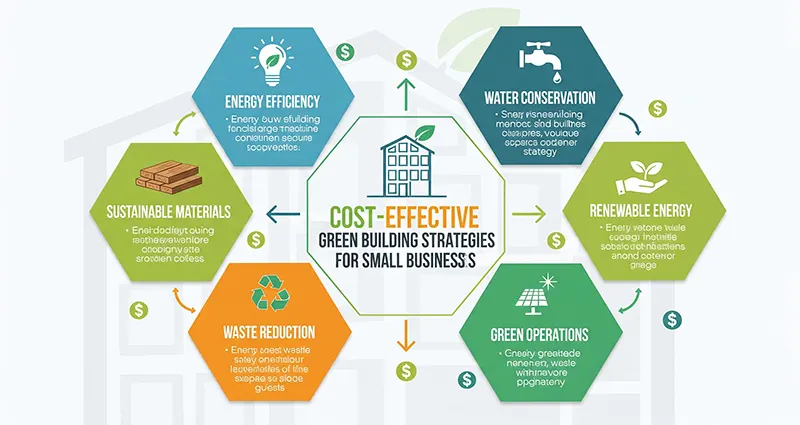In today’s environmentally conscious world, small businesses are increasingly seeking ways to reduce their ecological footprint while managing costs effectively. Implementing green building strategies not only benefits the environment but also helps businesses save money through energy efficiency and operational savings. Here, we explore cost-effective green building strategies that small businesses can adopt to create sustainable and efficient workspaces.
Why Green Building Matters for Small Businesses
Green building involves designing, constructing, and operating buildings in ways that reduce environmental impacts while improving occupant health and comfort. For small businesses, going green can lead to:
- Lower utility bills through energy and water savings
- Improved indoor air quality enhancing employee productivity
- Increased property value and marketability
- Access to tax credits or incentives for sustainable building
Cost-Effective Green Building Strategies
1. Optimize Insulation and Air Sealing
Proper insulation and air sealing are among the most cost-effective ways to improve energy efficiency. Ensuring that your building’s walls, roof, and floors are well-insulated minimizes heat loss in winter and keeps interiors cooler in summer. Sealing gaps and cracks prevents drafts, reducing the burden on heating and cooling systems.
2. Install Energy-Efficient Lighting
Switching to LED lighting is an affordable upgrade with immediate benefits. LEDs consume up to 75% less energy than traditional incandescent bulbs and last significantly longer. Incorporating daylighting strategies—using natural light through windows and skylights—can further reduce the need for artificial lighting during daylight hours.
3. Use Energy-Efficient HVAC Systems
Heating, ventilation, and air conditioning (HVAC) systems account for a large portion of energy consumption in buildings. Installing energy-efficient HVAC units with programmable thermostats can reduce energy use. Regular maintenance ensures optimal performance and prolongs system life.
4. Incorporate Water-Saving Fixtures
Low-flow faucets, toilets, and showerheads reduce water consumption without sacrificing performance. Installing these fixtures is usually low-cost and can significantly lower water bills over time.
5. Choose Sustainable Building Materials
Opt for materials with recycled content, low volatile organic compounds (VOCs), and sourced locally to reduce environmental impact. Materials like bamboo flooring, recycled steel, and reclaimed wood are durable and eco-friendly. Additionally, using materials that require less maintenance can lower long-term costs.
6. Implement a Recycling and Waste Reduction Program
Encourage recycling in your business by providing clearly labeled bins and educating employees. Waste reduction minimizes disposal costs and contributes to environmental sustainability.
7. Utilize Smart Building Technologies
Smart thermostats, occupancy sensors, and automated lighting controls optimize energy use by adjusting systems based on occupancy and time of day. Many smart devices are affordable and easy to install, enabling small businesses to reduce energy waste effectively.
Final Thoughts
Adopting cost-effective green building strategies can seem daunting for small businesses with limited budgets, but many sustainable practices are affordable and offer quick returns on investment. By focusing on energy efficiency, water conservation, and sustainable material use, small businesses can reduce operating costs, enhance employee well-being, and demonstrate corporate responsibility.
Embracing green building principles not only benefits the planet but also positions small businesses as forward-thinking and socially responsible—qualities increasingly valued by customers, employees, and partners alike. Start with small, manageable changes today, and watch your business thrive sustainably in the years to come.












